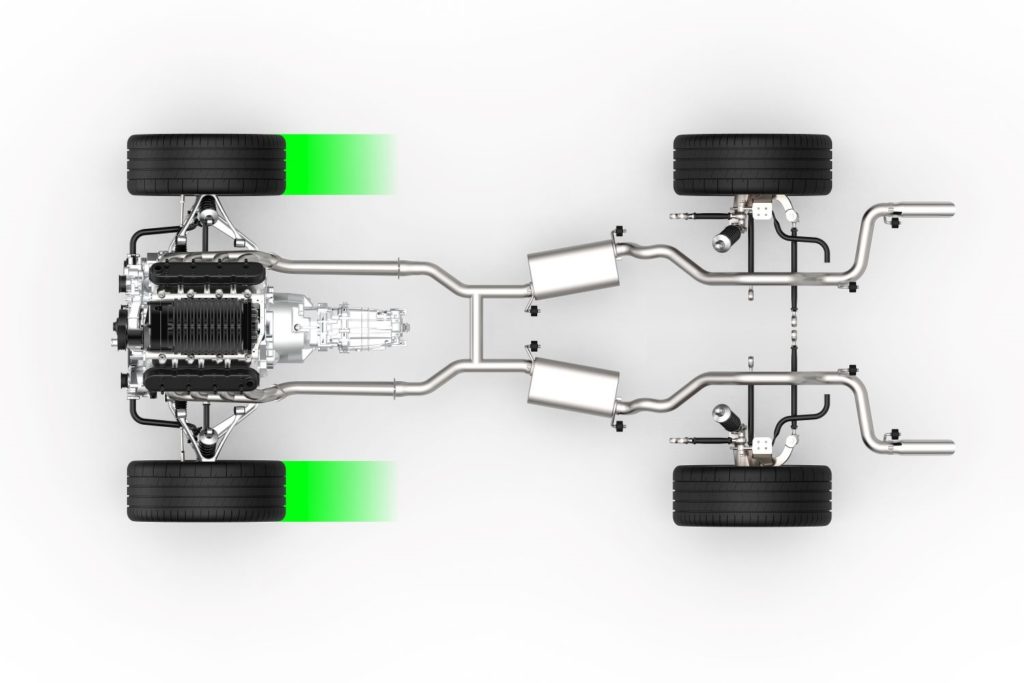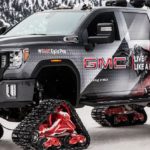The terms front-wheel drive (FWD) and rear-wheel drive (RWD) correspond to the wheels powered by the engine. Each configuration has a unique set of advantages and disadvantages. In this article, we’ll discuss the differences between FWD and RWD as well as their pros and cons.
What Are FWD Vehicles?
In FWD vehicles, the engine only sends power to the front wheels. This lets the rear wheels roll along. FWD configurations are popular because they’re usually cheaper to produce. As a result, FWD vehicles are typically more affordable. FWD vehicles have their entire drivetrain located under the hood. This allows the vehicle to have more room for passengers and cargo since its components require less room. FWD vehicles also tend to weigh less, which makes them more fuel-efficient.
FWD vehicles have more of their weight in the front. This improves the vehicle’s handling on snow and ice. However, this configuration isn’t ideal if you’re interested in going fast on regular paved roads. Since the front wheels are responsible for both propelling and steering the vehicle, immense lateral forces are exerted on the front wheels. This can prevent them from being used to accelerate in high-speed corners because they can understeer. Understeer occurs when the front wheels lose grip in a corner, which can cause a vehicle to run wide. Compared to RWD vehicles, FWD vehicles generally aren’t as responsive or nimble when it comes to cornering.

What Are RWD Vehicles?
RWD vehicles only send power to the rear wheels. RWD vehicles have better handling because they allow the front wheels to focus on steering the vehicle, while the rear wheels can focus on propelling the vehicle. Unlike FWD vehicles, the front wheels of RWD vehicles aren’t overwhelmed in corners. This is why most sports cars, sports sedans, and muscle cars are rear-wheel drive.
More of the vehicle’s drivetrain components are located in the center or rear of the vehicle on RWD vehicles. This distributes the weight more evenly among the vehicle’s four wheels and tires. This is why drivers will often say that RWD vehicles have better balance. Having good vehicle balance allows drivers to corner more confidently because the vehicle’s weight isn’t concentrated on one side of the vehicle. This allows the vehicle to equally distribute grip to all four wheels.
As a result, RWD vehicles are able to handle better and turn at higher speeds without losing grip. At the same time, RWD vehicles can generally accelerate more effectively because they have more weight in their rear. When a car accelerates, its weight gets transferred to its rear. This happens regardless of which wheels are driven by the engine. Since wheels gain more traction when there is more weight bearing down on the wheel, the rear wheels will have more grip while accelerating. This enables RWD vehicles to accelerate more effectively.

How Can You Tell Whether a Car Is FWD or RWD?
You need to look for a vehicle’s drivetrain components to be able to determine whether a vehicle is FWD or RWD. One of the telltale signs that a car is RWD is whether it has a driveshaft running under the vehicle. The driveshafts of trucks are typically more visible than those in sedans or SUVs. If the driveshaft is visible, you can see it spin as it transfers power from the transmission to the rear axle. You can also tell that a car is an RWD by looking at its engine. If the engine is mounted longitudinally, then it’s RWD. FWD vehicles have their engine turned sideways, with the crankshaft being parallel with its front axle.

FWD vs. RWD
Which Is Better for Towing?
Weight distribution matters a lot when it comes to traction and acceleration. The drive wheels need to have some weight bearing down on them to be able to have enough grip to accelerate. A vehicle that has too much weight away from the drive wheels might have trouble gripping the road.
Since trailers are loaded onto a vehicle’s rear, their weight is exerted onto the rear wheels. Vehicles like SUVs and pickup trucks benefit from having an RWD configuration because the weight from trailers is typically loaded onto the rear wheels.
However, towing trailers on an RWD vehicle also has some risks. RWD vehicles that are towing trailers are prone to a phenomenon called fishtailing. If your trailer’s center of gravity is high, while traveling at high speed, a gust of wind can cause the trailer to sway violently. If not properly controlled, this can result in an accident.
Which Is Better in Rain or Snow?
FWD vehicles have a significant advantage over RWD vehicles in slippery road conditions such as rain or snow. Accelerating too hard on slippery roads in an RWD vehicle can cause the rear wheels to step out. This is called oversteer, and it’s very hard to control or correct in low-grip scenarios. FWD vehicles don’t have this tendency. However, FWD vehicles will lose the ability to steer or change direction when the front wheels are spinning. The weight of the engine and the drivetrain at the front of the vehicle also helps FWD vehicles have more traction in low-grip situations.
Which Is Better for Drifting?
Drifting is a sport where drivers take corners while the vehicle is sideways. Often, the car’s drive wheels are spinning throughout the turn. RWD vehicles can drift much more easily because their rear can step out while cornering once the driver presses hard on the throttle. However, guiding a car through a turn while drifting is a skillful feat because drivers need to make precise throttle and steering inputs. The heat caused by friction can cause tires to make large white plumes of smoke. A good drifter can wear out a new set of rear tires after just a few miles. Drifting in an FWD car is possible but much more difficult. If you want to drift your vehicle, getting an RWD vehicle is the best way to do it.
Any information provided on this Website is for informational purposes only and is not intended to replace consultation with a professional mechanic. The accuracy and timeliness of the information may change from the time of publication.



























